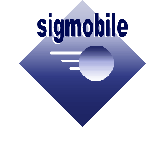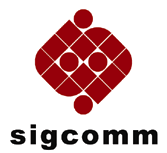Accepted Papers
COMSNETS 2019 paper decisions are out!
Kindly note that the registration for all COMSNETS 2019 papers is mandatory. Even if all the authors of your paper are students you still need to do AT LEAST ONE FULL REGISTRATION. This is as per the guidelines of IEEE and ACM. It is mandatory to register for the paper before uploading the camera ready to EDAS. There will be no exceptions to this policy.
Further, if you are a student author, we encourage you to apply for various travel grants advertised on the conference website.
Camera ready papers are due by Nov 23rd, 2018. Please adhere to the instructions given on the website in preparing the camera ready manuscript.
List of accepted papers in COMSNETS 2019
- A Comparison of Machine Learning Attributes for Detecting Malicious Websites
Amit Kumar Singh (Birla Institute of Technology, Pilani, India); Navneet Goyal (BITS-Pilani, India) - A Deep-Learning Enabled Traffic Analysis Engine for Video Source Identification
Yan Shi and Subir Biswas (Michigan State University, USA) - A Fast Parallel Genetic Algorithm Based Approach for Community Detection in Large Networks
Arnab Kumar Ghoshal (Shibpur Dinobundhoo Institution(College), India); Nabanita Das (Indian Statistical Institute, India) - A feature-ranking framework for IoT device classification
Bharat Atul Desai (Singapore University of Technology and Design, Singapore); Dinil Mon Divakaran (Singtel, Singapore); Ido Nevat (TUMCREATE, Singapore); Gareth W. Peters (Heriot-Watt University, United Kingdom (Great Britain)); Mohan Gurusamy (National University of Singapore, Singapore) - A Novel Architecture for Ultra-High-Speed Visible Light Communication
MD Rashed Rahman, S M Towhidul Islam and Ashwin Ashok (Georgia State University, USA) - A Novel Network Architecture for Resource-Constrained Post-Disaster Environments
Krishnandu Hazra (National Institute of Technology Durgapur, India); Vijay K. Shah (University of Kentucky, USA); Mohd Bilal (National Institute of Technology, India); Simone Silvestri (University of Kentucky, USA); Sajal K. Das (Missouri University of Science and Technology, USA); Subrata Nandi (National Institute of Technology, Durgapur, India); Sujoy Saha (National Institute of Technology, India) - A Performance Evaluation Framework for New Generation of Service Replication Schemes
Nandan Banerji (National Institute of Technology Durgapur, India); Bikash Choudhury (NIT DURGAPUR, India); Subhrabrata Choudhury (National Institute of Technology Durgapur, India) - A pseudo-dynamic scheme for mixed unicast and multicast traffic scheduling in IEEE 802.11 WLAN
Dhrubajyoti Bhaumick and Sasthi C. Ghosh (Indian Statistical Institute, India) - An adaptive threshold energy detection mechanism using GNU Radio on USRP
Avinash Reddy Avuthu (MNIT, Jaipur, India); Ramesh Babu Battula (Malaviya National Institute of Technology Jaipur, India); Dinesh Gopalani (MNIT Jaipur, India); Chaithanya Kurra (MNIT, India) - An extensible evaluation system for DoS research
Nik Sultana, Shilpi Bose and Boon Thau Loo (University of Pennsylvania, USA) - An optimal multi-channel coordination scheme for IEEE 802.11p based Vehicular Adhoc Networks (VANETs)
Antonysamy Justin Gopinath and B Nithya (National Institute of Technology, India) - Analysing Real and Fake users in Facebook Network based on Emotions
Mudasir Wani (Jamia Millia Islamia, India) - Analysis of a Novel Beacon Placement Strategy for 3D Localization in Indoor Spaces
Ravi Sharma (Indian Institute of Technology Jodhpur, India); Venkataramana Badarla (Indian Institute of Technology Tirupati, India) - Capacity Analysis of a Narrowband Powerline Communication Channel Under Impulsive Noise
Roopesh Ramesh, Sushma Bs and Sanjeev Gurugopinath (PES University, India); Muralishankar R (CMR Institute of Technology, India) - Cloud Functions for Fast and Robust Resource Auto-Scaling
Joe Novak, Sneha Kumar Kasera and Ryan Stutsman (University of Utah, USA) - Determining web service dependencies from limited TCP packets
Dhaval Shah (Researcher in TCS, India); Manoj Nambiar (Tata Consultancy Services & Institute of Electrical and Electronics Engineers, India) - Dynamic Load Balancing across Multi-radio Access Bearers in 5G
Narasimman Subburayalu (Samsung R&D India - Bangalore, India); Sridharan Natarajan (Samsung Research Institute Bangalore & IIITB, India); Debabrata Das (International Institute of Information Technology - Bangalore, India) - Efficient Data usage and Saving while Streaming Video
Om Prakash and Prasenjit Chakraborty (Samsung Research India, Bangalore, India); Shweta Aggarwal (Software Engineer, India) - Efficient Management of Building Energy Resources
Kumar Saurav and Vijay Arya (IBM Research, India) - Energy Efficient Channel State Classification for Lifetime Enhancement of LPWA Networks
Chhayarith Heng Uy (Université Grenoble Alpes & Gipsa-Lab, CEA, Leti, France); Carolynn Bernier (CEA/Leti - Minatec, France); Sylvie Charbonnier (Gipsa-lab INPG-CNRS, France) - Factor Graph-based Message Passing Technique for Distributed Resource Allocation in 5G Networks
Ajay Pratap (Missouri University of Science and Technology, USA); Rishabh SInghal (Indian Institute of Technology Patna, India); Rajiv Misra (Indian Institute of Technology Patna & IIT Patna, India); Sajal K. Das (Missouri University of Science and Technology, USA) - ICON: Incast Congestion Control using Packet Pacing in Datacenter Networks
Hamed Rezaei, Muhammad Usama Chaudhry, Hamidreza Almasi and Balajee Vamanan (University of Illinois at Chicago, USA) - Improving Blockage Robustness in VLC Networks
Jona Beysens, Qing Wang and Sofie Pollin (KU Leuven, Belgium) - Iris: A Directional MAC Protocol with Applications to Millimeter-Wave Mobile Ad-Hoc Networks
Bharadwaj Satchidanandan, Venkata Siva Santosh Ganji and P R Kumar (Texas A&M University, USA) - ISP's Pricing Strategy: Advance vs Simultaneous
Rohit Tripathi (Indian Institute of Information Technology Guwahati, India) - Learning Based Adaptive Fair QoS in IEEE 802.11ac Access Networks
Raja Karmakar (Techno India College of Technology, India); Samiran Chattopadhyay (Jadavpur University, India); Sandip Chakraborty (Indian Institute of Technology Kharagpur & CSE, India) - Mutual Authentication for IoT in the Context of Fog Computing
Leandro Loffi, Carla Merkle Westphall, Lukas Grüdtner and Carlos Becker Westphall (Federal University of Santa Catarina, Brazil) - On the Economics of Network Interconnections and Net Neutrality
D. Manjunath (IIT Bombay, India); Sravan Patchala (Indian Institute of Technolofgy, Bombay, India); Changhee Joo (UNIST, Korea); Seunghyun Lee (Ulsan National Institute of Science and Technology, Korea) - On the potential of Google AMP to promote local content in developing regions
Amreesh Phokeer (University of Cape Town, South Africa & AFRINIC, Mauritius); Josiah Chavula (University of Cape Town, South Africa); Gareth Tyson (Queen Mary, University of London, United Kingdom (Great Britain)); Arjuna Sathiaseelan (University of Cambridge, United Kingdom (Great Britain)); Melissa Densmore (University of Cape Town, South Africa); Nick Feamster (Princeton University, USA); David L Johnson (University of Cape Town & Ammbr Research Labs South Africa, South Africa) - OpenSnap: Collection of Globally Consistent Statistics in Software Defined Networks
Sandhya Rathee (Birla Institute of Technology and Science Pilani, India); Rahul Sharma and Piyush Kumar Jain (Birla Institute of Technology and Science, Pilani, India); K Haribabu (BITS Pilani, India); Ashutosh Bhatia (Birla Institute of Technology and Science, Pilani, India); Sundar Balasubramaniam (BITS Pilani, India) - Optimal VM Coalition Selection for Multi-Tier Applications Over Multi-Cloud Broker Environment
Sourav Kanti Addya (Indian Institute of Technology, Kharagpur, India); Anurag Satpathy (National Institute of Technology, Rourkela, India); Sandip Chakraborty (Indian Institute of Technology Kharagpur & CSE, India); Soumya K Ghosh (Indian Institute of Technology Kharagpur, India) - Optimized Adaptive Streaming with Intelligent Network Awareness
Prasenjit Chakraborty (Samsung Research India, Bangalore, India); Shweta Aggarwal (Software Engineer, India); Om Prakash (Samsung Research India, Bangalore, India) - Optimizing Fading-Averaged Bandwidth Efficiency of Underlay Cognitive Radio System by Transmit Power Adaptation
Anubhav Sachan (BITS Pilani, India); Rakshith S (BITS Pilani, Rajasthan, India); B. Sainath (BITS Pilani, India) - PlumeWalk: Towards Threat Provenance Localization for IoT Networks
Aditya Ahuja and Himanshu Gandhi (Indian Institute of Technology Delhi, India); Rajeev Shorey (TCS Innovation Lab, India); Devadatta Kulkarni and Jeffrey Tew (TCS Innovation Labs, USA) - Pricing in Ride Sharing Platforms: Static vs Dynamic Strategies
Vivek Nagraj Pandit (IIT Bombay, India); Mandar K Datar (INRIA & LIA University of Avignon and the Pays de Vaucluse, France); Manjesh K Hanawal (IIT Bombay, India); Sharayu Moharir (Indian Institute of Technology Bombay, India) - Privacy-Aware Peak Load Reduction in Smart Homes
Aarushi Sarbhai, Jacobus Van der Merwe and Sneha Kumar Kasera (University of Utah, USA) - Rational Mining Of Bitcoin
Soumen Pachal (TCS Innovation Labs, India); Sushmita Ruj (Indian Statistical Institute, Kolkata, India) - Representation Learning on Graphs by Integrating Content and Structure Information
Ayush Maheshwari and Ayush Goyal (Indian Institute of Technology Bombay, India); Amit Kumar (Adobe India, India); Manjesh K Hanawal (IIT Bombay, India); Ganesh Ramakrishnan (Indian Institute of Technology Bombay, India) - Routing, Modulation and Spectrum Assignment using an AI based Algorithm
Varsha Lohani (IIT Kanpur, India); Yatindra Nath Singh (Indian Institute of Technology Kanpur, India); Anjali Sharma (IIT Kanpur, India) - Secure and Efficient Anonymous Authentication Protocol for Global Roaming Services
Prasanta Kumar Roy and Ansuman Bhattacharya (Indian Institute of Technology (ISM) Dhanbad, India) - SNR Wall Under Different Scenarios for Cooperative Spectrum Sensing using GED
Kamal Captain (Dhirubhai Ambani Institute of Information and Communication Technology, India); Manjunath V. Joshi (DA-IICT, India) - SUB_ISO: A Scalable and Novel Approach for Subgraph Isomorphism Search in Large Graphs
Muhammad Abulaish (South Asian University, New Delhi, India); Zubair Ansari and Jahiruddin Jahiruddin (Jamia Millia Islamia (A Central University), India) - Throughput Improvement in Hybrid MIMO Cognitive Radio Using Simultaneous Narrowband and Wideband System
Chetna Singhal (Indian Institute of Technology Kharagpur, India); Vinayak Patil (IIT Kharagpur, India) - Towards an Open Testbed for Tactile Cyber Physical Systems
Kurian Polachan (Indian Institute of Science, India); T Venkata Prabhakar (IISc, India); Chandramani Singh (Indian Institute of Science, India); Fernando A. Kuipers (Delft University of Technology, The Netherlands) - Traffic Splitting for End-to-end Delay Jitter Control in Uplink Multi-Access Systems
Megha Sahu (Indian Institute of Technology Bhilai, India); Snigdha Damle (IIT Bhilai, India); Arzad Kherani (Indian Institute of Technology, Bhilai, India) - User Driven Dynamic Frequency Scaling for Power-Aware Mobile Cloud Terminals
Suchintan Mishra (National Institute of Technology, Rourkela, India); Manmath Narayan Sahoo (National Institute of Technology Rourkela, India); Sambit Bakshi (National Institute of Technology, Rourkela, India)



























